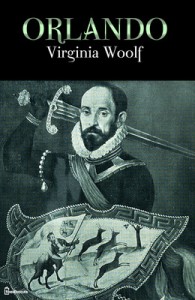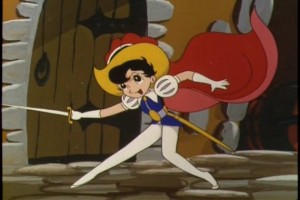There’s probably nothing worse than making a dope pop culture reference and having no one pick up on it. Growing up watching the Simpsons and listening to hip hop, my vocabulary is rife with allusions, and having someone that isn’t my sister pick up on the cryptic hidden messages is like finding out you’re not the only person who drinks pickle juice. Finding someone who gets your references is finding a kindred spirit. It is like finding a sub-reddit for your identity. It is feeling like whatever story you’re telling is finally being heard.
Perhaps that is why Thomas King writes with so many arcane, subtle and humorous allusions. Why he so seamlessly weaves pop culture, religious and historical sub-plots into the more obvious stories he is telling. In writing with allusions, King is bringing to attention the pre-existing knowledge of the reader, and challenging them to develop more. He is picking at the scabs of histories that have been heard time and time again to reveal ones that haven’t. King’s stories are uniquely accessible in that one could read them with a certain whimsy that does not acknowledge any of the sub-histories of his words, but also invites readers to look into the layers of what he is saying–the foundation that holds stories we originally thought stood alone.
I will be looking at pages 31-40 “Where did all of the water come from?” to “Eliot paused at the door. …”. I am lucky to be engaging with the introduction of Ahdamn and the First Woman, Alberta Frank’s love triangle and the trouble with the “disappearing Indians”.
When I first started to write this blog post, I was worried that I couldn’t find any allusions in the first section about the First Woman and Ahdamn. I went to Catholic primary and secondary schools, so the religious allusions seemed so obvious to me that they didn’t seem like references. An assumption about knowledge and backgrounds that I made: that this “blatant” referencing was intentional, as if everyone grew up handing out the Eucharist during “junior liturgy”.
ANYWAY, the first section was a fun little dive into the story of Eden, with a feminist, Indigenous, Thomas King original twist. When Ahdamn (note the cadence of the spelling) is introduced, there is a line, “I don’t know where he comes from. Things like that just happen, you know.” (pg. 40 in my book) Ahdamn seems to be the embodiment of settler-colonists, while the First Woman would represent Indigenous folks. Ahdamn has an endearing lack of knowledge, displayed in his attempt to name things. This naming process, in which Ahdamn gives names to creatures and is told to “try again” (41), alludes to pre-existing knowledge–even in the garden of the first man and woman–feeding into a more circular definition of time, with an ever elusive “beginning”. This is also alluded to in the beginning of the section, “where did all of the water come from?” (38, my book)–this constant digging for the beginning.
I love food. I don’t know why I got such a kick out of the fried chicken and hot dogs falling from the trees, but I absolutely loved the idea of Americana, processed foods nourishing the first people. I don’t know if this is a stretch, but I do know that John Locke was pretty influential (and very racist) in helping colonizers to form laws and political philosophies around indigenous-colonizer relations. In The Second Treatise of Civil Government Chapter Five, “Of Property” (1960), Locke delves into these complicated notions of ownership, with Christianity being the main foundation of his discussion and understanding of what man can and cannot own. I do not have the time/space/extensive knowledge necessary to break down Locke’s influence on colonial laws, and how much his notions of religious morality (and therefore who was and was not human) skrewed over First Nations groups, but I do just need to say that it is relevant for King to be referencing Locke’s 1) fixation on religious entitlement/morality 2) discussion around property via food humour.
To crudely summarize, Locke notes that God created everyone/everything, but what makes something the rightful property of man is the labour that man puts into it. This exhibits a moral lean towards agricultural rather than nomadic lifestyles. And also assumes that Indigenous people did not have any agricultural knowledge/practices–which is just plain wrong. Locke breaks down this overarching power of God into ownership being fixed by man when he exudes his effort into it. Thus justifying ownership. God technically owns everything but the white man civilizing it is the next best thing. Food falling from the sky pokes fun at the misread histories of Indigenous land use/existence and brings to question notions of “property” and land ownership that are still vital to First Nations-state relations today.
Moving on to my gal, Alberta. The negotiation in Alberta’s head around hating to travel and preferring engaging with her gentlemen callers in “her city, her house, her terms” (44) also brought be make to notions of property, terra nullis, and who got to make the rules. “But Alberta knew that apart from no men in her life, two was the safest number.”(45) The choice of the word “safe” is vital, in that its antonym is “dangerous”. I do feel like this notion of men being dangerous to an Indigenous woman has layers and layers of meaning, but would like to focus on two things. First, the Indian Act and White Paper in Canada and the notion of “Indian status”. I don’t think I am equipped to engage fully with the complexities of Indian status as both detrimental and important, but one thing to be noted is that a woman would lose her status if she married a non-Indigenous man. Patriarchy transcends female identity every. time. Furthermore, this notion that “more than sex…men wanted marriage.” (45) continues this notion of something being turned into one’s property via that insertion of labour. To marry a woman is to make her your rightful property. Same as agriculture. ~~excuse me while I barf all over the place~~ but the empowering thing is that Alberta is savvy to these dangers and is playing Charlie and Lionel like a straight up killa.
The second is a more obvious discussion around danger, and the ongoing violence against Indigenous women that is continually ignored (and thus justified) by the Canadian legal system.
Finally, the discussion between Dr. Eliot and Dr. Hovaugh around the “disappearing Indians”. Heynow this brings me full circle to my first blog post about the Edward Curtis Project. Full circle. But Edward Curtis was taking photos of Indigenous people on the basis that they were a “vanishing race”. Because genocide. But furthermore, the language of “vanishing” or “disappearing” not only adds this mystical element to the genocide of First Nations people, but transfers the agency from violent settler-colonists to the Indigenous folks themselves. This is played with in the last sentence, “why would they want to leave?” (48).
Works Cited
King, Thomas. Green Grass Running Water. 38-48. Harper Perennial. Toronto. 1999.
Locke, John. Second Treatise of Civil Government. “Of Property”. 1960. Web. https://www.marxists.org/reference/subject/politics/locke/ch05.htm




